Castillo de Santa Catalina overlooking Jaen city in Andalucia, an 11th century Muslim castle.
By Nick Nutter | Updated 4 Jun 2023 | Jaén | Places To Go |
Login to add to YOUR Favourites or Read Later
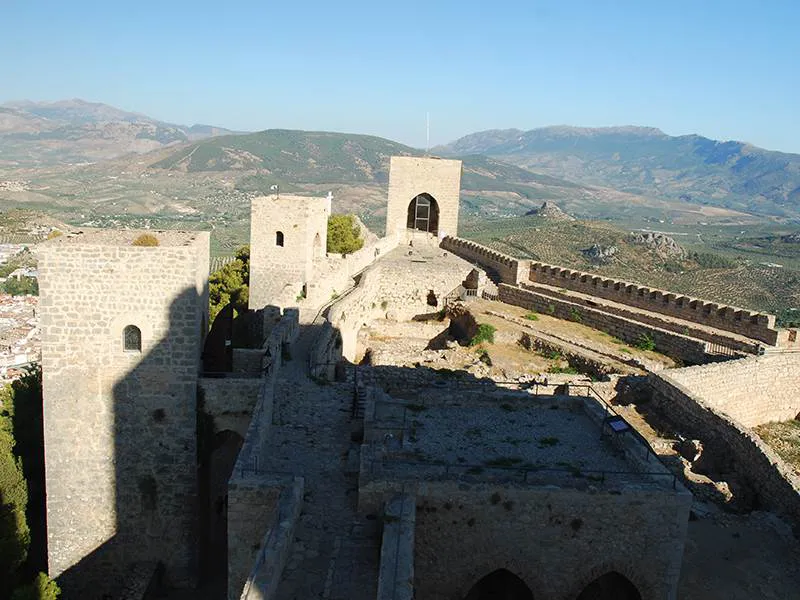
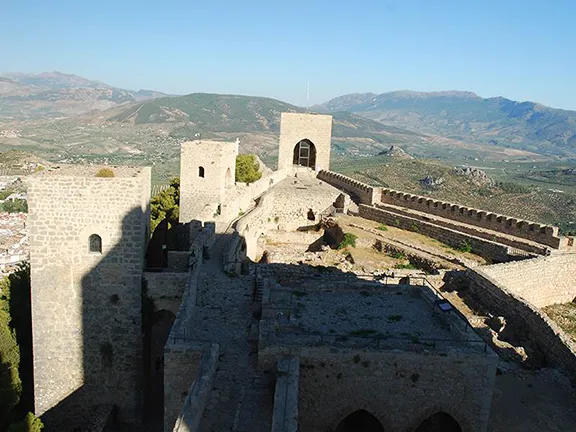
Castillo Santa Catalina Jaen
Jaén province has the highest concentration of castles and watchtowers in the whole of Europe. Of the original 400, about ninety survive to this day. They were built during the Middle Ages to safeguard the frontier between Christian Castilla and Muslim Granada and many were enhanced from the 13th century as Christian forces gradually reconquered Al Andalus. Castillo de Santa Catalina dominates the skyline to the east of Jaén city and has its own history and legends.
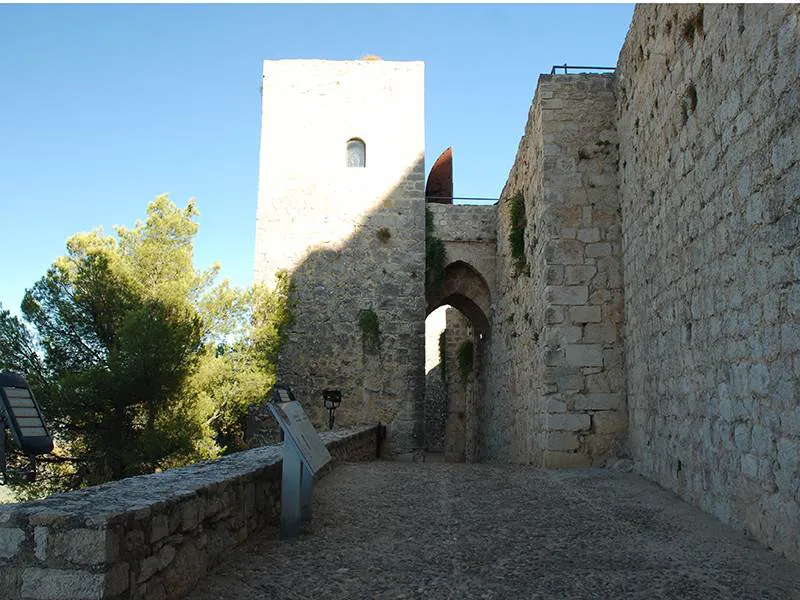
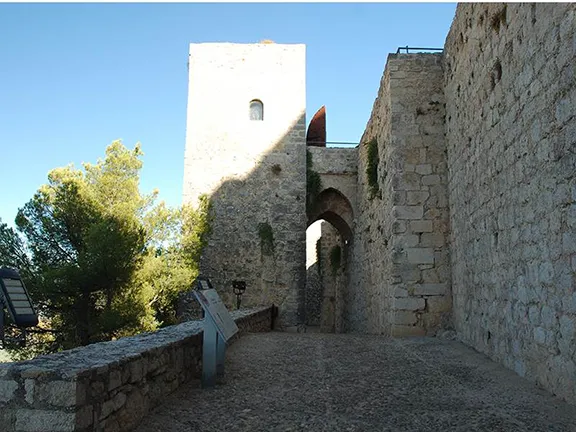
Gate to Castillo Santa Catalina Jaen
Unlike many of the castles in the province, Santa Catalina is easy to reach. You do not have to drag yourself up a steep hill since part of the castle is still used; it is a Parador Hotel. In fact, if you reserve a table at the hotel restaurant and arrive a couple of hours early, a gentle stroll through the castle is a great way to work up a thirst for an aperitif and an appetite for the meal. From the battlements of the castle alongside the restaurant bar terrace you look down on the gatehouse, now the modern road to the car park, and the remains of the old walls that date back to the Muslim conquest in the 9th century.
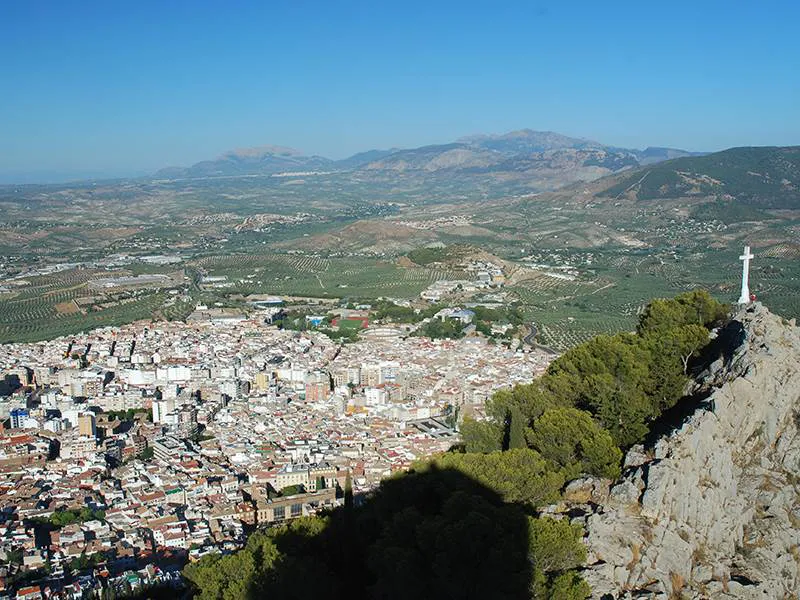
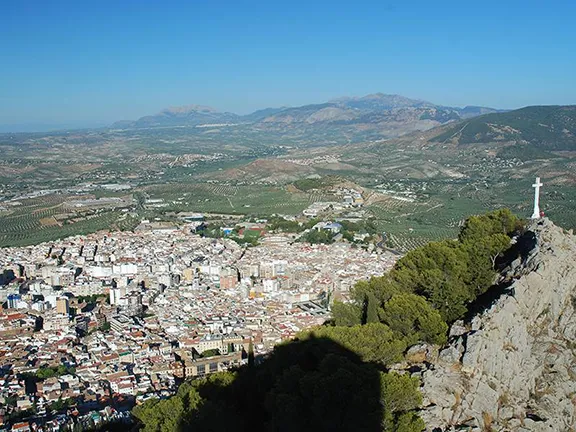
Castillo Santa Catalina View Jaen
The Muslim city of Madinat Yayyan grew from small beginnings, an Iberian settlement in the 4th century, to a city with at least three public mosques and five public baths by the middle of the 9th century. There were palaces and official buildings surrounded by public gardens as well as the typical Moorish style of habitation. It was situated at the foot and up the slope of the Santa Catalina hill and protected by fortified walls and a citadel on the summit. During the unstable period between the 11th and 12th centuries the governor’s residence was moved from the town to the citadel and a further defensive wall was built, the whole being then known as the Castle of Abrehuí.
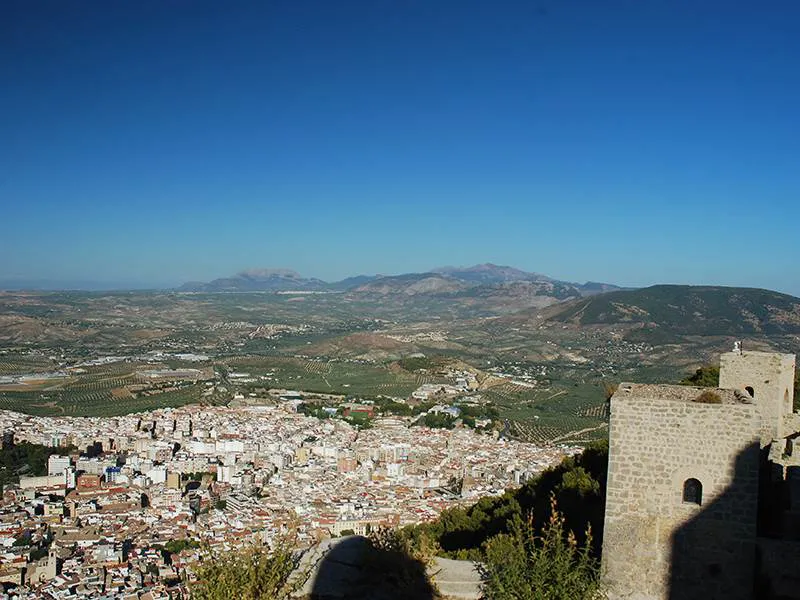
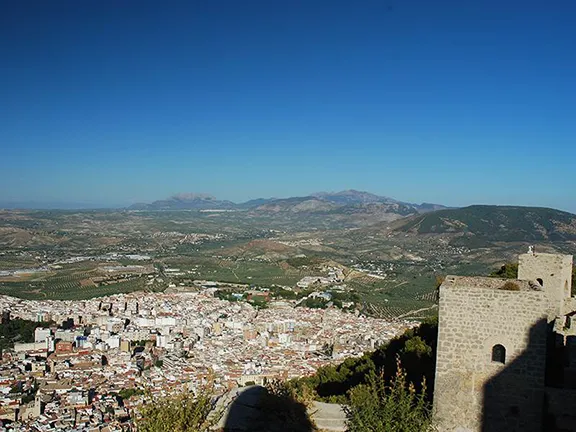
Castillo Santa Catalina View Jaen
The Castle of Abrehuí was besieged in 1151 and 1152 by Alfonso VII but he was unable to take the city. It was left to Fernando III to negotiate a surrender after besieging the city three times, in 1225, 1230 and finally in 1246. It was Fernando that was responsible for much of the castle you see today. At the southern end of the Santa Catalina hill, he replaced the Caliphate fortress with an ashlar block castle and called it Santa Catalina.
Fernando went on to grant domains to various groups such as the Order of Santiago and the Order of Calatrava and a number of favoured nobles. They were responsible for establishing many of the towers and castles in the province. Each castle sent out patrols into the surrounding countryside and each was in sight of at least two others. They communicated by the use of mirrors and smoke signals to give warning of any encroachment into the area by Muslim forces. Santa Catalina for instance was in visual communication with another six torres or castles.
In 1295, Mohammed II of Granada attempted and failed to conquer Santa Catalina, although he did manage to wreck most of the outskirts of the town. In 1368 the Muslims tried again. This time they managed to take the city but again failed to subdue the castle. The final Muslim siege took place in 1407.
Even with the area reconquered by Christian forces, the inhabitants of Jaén knew no lasting peace. During the Castilian civil wars the castle was attacked in 1445, 1463 and 1465 by Prince don Enrique, contender to the Castilian throne occupied by Henry IV of Castile, ‘the impotent’.
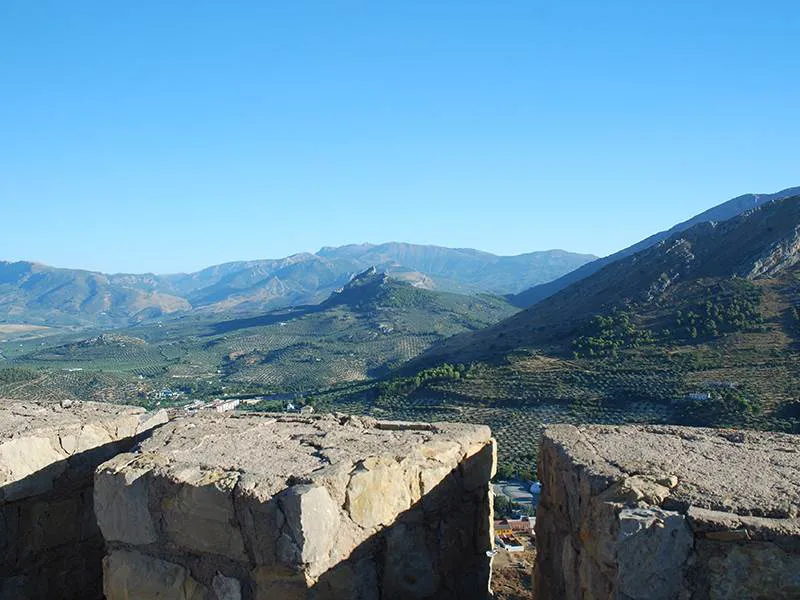
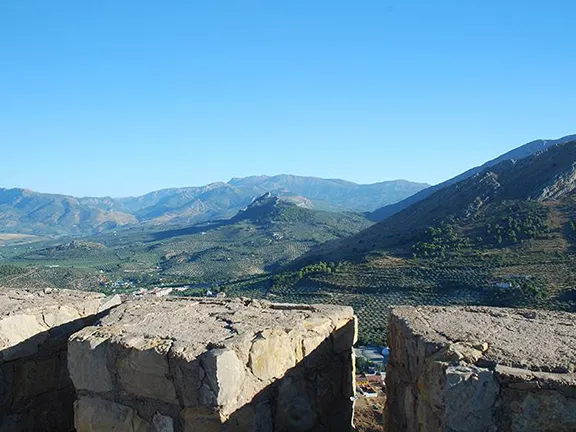
Castillo Santa Catalina View Jaen
Four hundred years later, Santa Catalina was again in action. This time against the French troops of Napoleon. They occupied the fortress from January 1810 until September 1812. The Napoleonic troops turned the fortified enclosure into a large barracks and installed accommodation for the regular troops, stables, dungeons, offices, powder rooms and even a hospital with fifty beds.
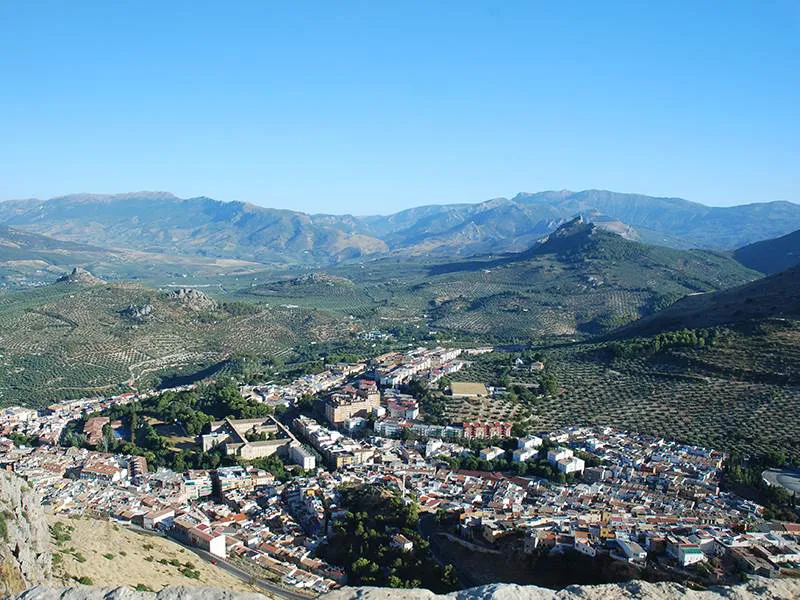
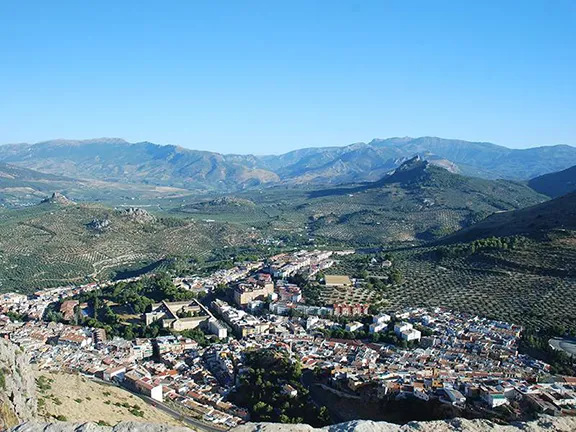
Castillo Santa Catalina View Jaen
The current castle of Santa Catalina was built during the reign of Fernando III and that of his son and successor, Alfonso X el Sabio. Its purpose was to control the city and the roads that led from it.
Its shape is that of an elongated triangle and it is built with ashlar in the corners and brick in the voussoirs (tapered or wedge shaped stones or bricks) of the arches. Around the parade ground, there are five towers joined by crenelated barbicans that defend the north flank, while on the steeper southern flank, it only has a wall with battlements and loopholes joining the two towers.
Santa Catalina’s most significant element is the impressive Torre del Homenaje, built in the 13th century at the top of the citadel. With a square plan and a height of more than thirty meters, it consists of two floors illuminated by small embrasures and covered by vaults with crossed edges with pointed arches, it is equipped with strong walls, crowned by battlements and topped by protective machicolations from which noxious fluids could be poured onto invaders.
The entrance to the tower overlooks the parade ground and is reached by a narrow, recessed staircase.
Next to the Torre del Homenaje and joined to it by a crenelated barbican is another tower with a rectangular structure inside which there is a room covered by a barrel vault, illuminated by pointed windows with mullioned windows, the so-called Torre de las Damas, which dominates the entrance to the castle.
There are two albarranas towers connected to the curtain wall by a narrow walkway, each with a square plan and covered with a pointed vault, one of them houses the Chapel of Santa Catalina and finally the Torre de la Vela at the eastern end, with a pentagonal plan that houses a large room and from whose roof light signals were emitted to other defensive posts in the area.
In the centre, the castle has a large parade ground with two wells.
The Old Castle, located in Caliphal times on the rocky ridge and built with rammed earth and irregular masonry, was reinforced by Almoravids and Almohads with walls and square towers, built with mud brick walls covered by stone that were later embellished and its defences reinforced by Ibn al-Ahmar. It was later reformed by the French in the early 19th century.
The Old Castle towers have disappeared although the door that gives access to the citadel, flanked by two towers with a parapet, is preserved although it was modified in Christian times. The Napoleonic troops used this castle as a barracks but they set it on fire when they fled. It also served as a jail and cemetery. This part of the castle was destroyed between 1965 and 1979, to be replaced by the Parador Hotel.
The Abrehuí castle-palace, of which only a few masonry bastions remain, was on the flat, northern part of the hill, close to the Old Castle with which it shared the same parade ground.
For the visitor today, Santa Catalina is a remarkable example of military architecture with fantastic views over Jaén city and the olive groves that surround the city.
For opening times and prices of Castillo de Santa Catalina, click here